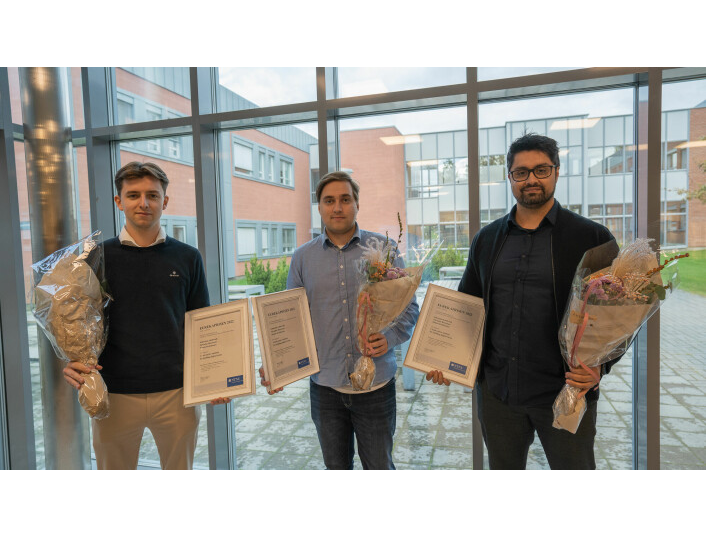
Recently NTNU awarded the Eureka prize (1) for the best bachelor's thesis at the Faculty of Information Technology and Electrical Engineering. The winner was a project assignment in which the students developed a method for developing digital twins based on data input from Glex and a reference data set from Equinor and Gassnova (2).
The Eureka prize is awarded every autumn and goes to very good student projects (bachelor's theses with grade A), where the professional communities nominate projects. The Eureka prize consists of a diploma and a cash prize of ten thousand kroner, and winning essays can come from each of the faculties represented at Gjøvik.
- Glex introduced the idea for the students. Glex contacted us with an assignment to develop a digital twin based on data from the oil and gas industry. We discussed possible projects and ended up with a task which was to create a digital twin of the Smeaheia area - a carbon capture project where Equinor has done preliminary research and has recently been awarded a license and operatorship (3), says Salvador Bascunan, who carried out the project together with fellow students Dennis Kristiansen and Sebastian Lindtvedt.
- We started from scratch because none of us knew anything about geology, so understanding the geology behind it all, how a geologist thinks and works, was a big challenge. But luckily we got fantastic help and support from Glex, where we had weekly meetings and went through a five-week planning phase. Technically, this was very demanding, considering the professional level and how deep into the material we had to dig, says Bascunan.
- Was working with geology more enjoyable?
- Yes absolutely. All three on the team ended up in jobs working on other things, after finishing their studies, but that was mostly because everyone had got a job at the time the task was chosen. But I think everyone can imagine working with similar themes in the future if the opportunity presents itself, concludes Salvador Bascunan.

Managing director Jørgen Engen Napstad is clear that the collaboration with the NTNU students has been beneficial for Glex:
- We gave the students great freedom and a demanding requirement specification, and they used the opportunity to develop a perfect answer (4). It was incredibly fun to see how they attacked the task, and how they fearlessly used a number of exciting technologies to achieve the end result. For us, this is something we can and will take with us further in our venture within CCS.